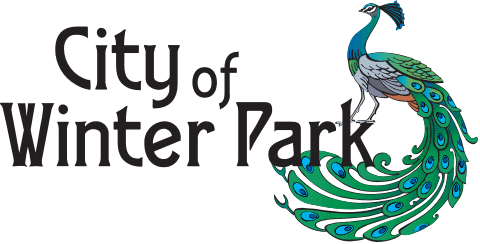Overview
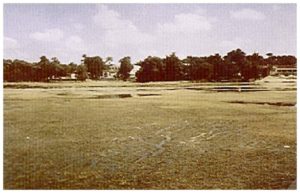 Plants are an important part of our environment. They provide us with food, building products, medicine, shade and beauty. Aquatic environments rely on plants as much as we do to remain healthy and vibrant. Just like on land though, aquatic plants can grow in areas or ways that impede the use and enjoyment of our resources. Exotic (non-native) plants can even be detrimental to the ecology of a water body. How we balance human interests with the ecological needs of the lakes and streams will determine the long-term health and usefulness of our waterways. The two questions that are frequently asked of lake managers are: “Why don’t you just kill all the weeds in the lake?” and “Why don’t you stop poisoning the lake and let nature take its course?” These two questions point up the competing interests of lake users, and the difficulty in developing a management plan that satisfies all parties.
Plants are an important part of our environment. They provide us with food, building products, medicine, shade and beauty. Aquatic environments rely on plants as much as we do to remain healthy and vibrant. Just like on land though, aquatic plants can grow in areas or ways that impede the use and enjoyment of our resources. Exotic (non-native) plants can even be detrimental to the ecology of a water body. How we balance human interests with the ecological needs of the lakes and streams will determine the long-term health and usefulness of our waterways. The two questions that are frequently asked of lake managers are: “Why don’t you just kill all the weeds in the lake?” and “Why don’t you stop poisoning the lake and let nature take its course?” These two questions point up the competing interests of lake users, and the difficulty in developing a management plan that satisfies all parties.
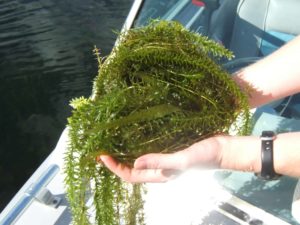 Aquatic plants provide food and shelter for a wide range of aquatic organisms.They also protect water quality by producing oxygen and absorbing nutrients from the water column.Emergent plants that grow along the shoreline and shallows of a lake provide essential erosion control that can save our valuable lakefront land, and reduce turbidity in the lake.These plants also provide feeding areas for many native bird species.For these reasons, killing all the plants in a lake is unwise.We would end up with poor fish and wildlife populations, frequent and severe algae blooms (rapid, massive growths of algae due to excessive nutrients) and eroded banks.
Aquatic plants provide food and shelter for a wide range of aquatic organisms.They also protect water quality by producing oxygen and absorbing nutrients from the water column.Emergent plants that grow along the shoreline and shallows of a lake provide essential erosion control that can save our valuable lakefront land, and reduce turbidity in the lake.These plants also provide feeding areas for many native bird species.For these reasons, killing all the plants in a lake is unwise.We would end up with poor fish and wildlife populations, frequent and severe algae blooms (rapid, massive growths of algae due to excessive nutrients) and eroded banks.
Although vegetation in general is good for a lake, we also cannot leave nature to run its own course in urban lakes.There are two main reasons for this.First, a number of non-native aquatic plants have been introduced to Florida.These plants have no natural enemies here, and grow out of control if left alone.Plants like hydrilla (Hydrilla verticillata) and water hyacinth (Eichornia crassipes) can completely cover the surface of a lake, preventing any recreational uses.When infestations reach this level, the plants also can cause massive fish kills due to oxygen depletion (caused by decaying plant material, and the isolation of the lake from the light and air above).Second, large inputs of nutrients from stormwater runoff (which carries sediment, leaves and fertilizers) have enriched our lakes to the point that even native plant species can grow out of control.Plants like cattail (Typha spp.)or even pickerelweed (Pontederia cordata) can form dense monocultures that reduce wildlife diversity and create huge muck deposits in shallow areas of the lake.An effective plant management program is needed to prevent rapid degradation of our lakes.
In order to meet the challenges of maintaining beneficial plants while minimizing undesirable ones, the city has developed an integrated management program that includes chemical, biological and mechanical control methods.This program is augmented by a public education program and a regulatory framework that covers shoreline vegetation removal activities. Each of these segments of the plant management program is discussed in detail by accessing the tabs to the left.
Biological Controls

There are three biological controls actively working on exotic plants in the lakes of Winter Park. One is the Alligator Weed flea beetle (Agasicles hygrophila) which has been naturalized in Florida for decades now and is very effective at controlling exotic Alligator Weed (Alternanthera philoxeroides). Another is the triploid grass carp, which is a sterile form of the Asian carp known as the white amur (Ctenopharyngodon idella). This fish, when used properly can reduce our dependence on herbicides for hydrilla (Hydrilla verticillata) control and still allow native plants to flourish. And lastly, Megamelus scutellaris is an insect currently being used to control water hyacinth throughout Florida. This insect is a plant hopper and is native to Argentina, Brazil, Peru, and Uruguay. Water hyacinth has been problematic in Florida since the late 1800s when it was accidentally introduced into our waterways.
Boating Regulations
Fishing on the lakes of Winter Park can be great. The rules governing fishing in all of Florida are developed, implemented and enforced by the Florida Fish and Wildlife Conservation Commission. Access the Florida Fish and Wildlife Conservation Commission – Fishing Section website to find information on license requirements, length and bag limits.
Once you know the rules, accessing the bathymetric maps and ramp locations can help you catch that big one.
Herbicide Program
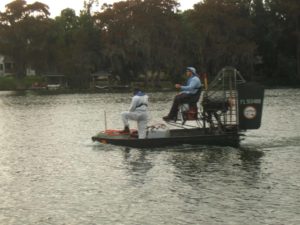
Some of the herbicides have use restrictions related to swimming and irrigation. When treatments are performed in your area, city crews will place a notice on your door detailing when the treatment will occur, and any restrictions associated with the herbicide being used. Use restrictions vary for different herbicides, but generally are from three to 14 days. Restrictions for swimming are often shorter than restrictions for irrigation.
Manual & Mechanical Control
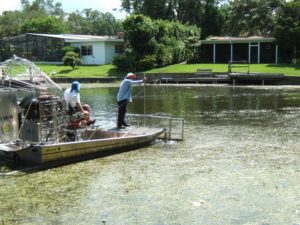
This technique is often used on city-owned shorelines to remove small amounts of exotic vegetation. Manual removal is most effective when employed frequently when the biomass of the unwanted plants is low. Occasionally, aquatic plants (even native species) can be cut by boats or uprooted by wildlife in amounts large enough to form floating mats that interfere with boat traffic. In cases like this, Lakes Division staff may employ an airboat mounted rake rig to collect and remove the mats. More sophisticated mechanical harvesters exist to cut large areas of rooted plants. The city does not own a harvester, but occasionally contracts these services when conditions warrant.
Plant identification
For detailed information on aquatic plants and to help with plant identification, please access the University of Florida IFAS Center for Aquatic Plants website.
Residential Shoreline Management
Shoreline plants provide many important functions in a lake system including protection of property from erosion, the uptake of nutrients and providing habitat for fish and wildlife. Since most of edges of our waterways abut private, residential properties, it is important for residents to understand the role these plants play in the aquatic ecosystem.
To help maintain shoreline vegetation and protect the overall health of the lakes, the city and the State of Florida regulate the types and amount of shoreline vegetation that can be removed. For more information, please access the Shoreline Permitting page.
